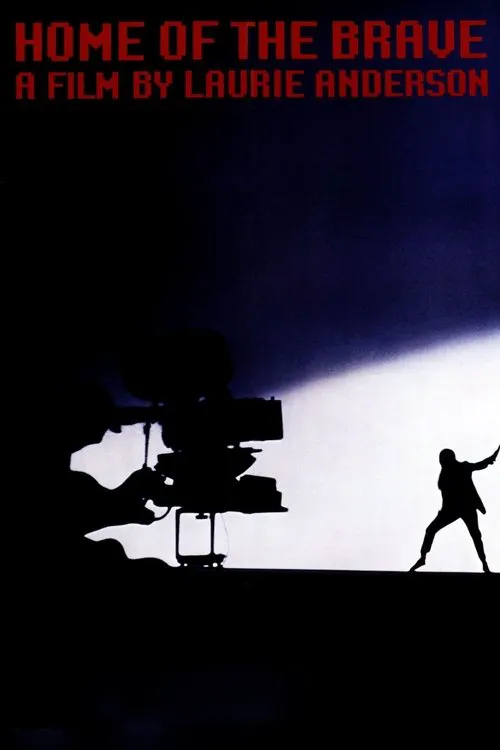Home of the Brave: A Film by Laurie Anderson

Intrigue
Released in 1986, "Home of the Brave: A Film by Laurie Anderson" is a groundbreaking concert film showcasing the eclectic and enigmatic musician Laurie Anderson at the peak of her creative powers. The film was shot over the course of several performances at the Park Theater in Union City, New Jersey, during the summer of 1985, capturing Anderson and her company in an immersive, experimental spectacle. The film is a sonic and visual tapestry of Anderson's music, drawn from her critically acclaimed 1984 album "Mister Heartbreak" and her 1982-1983 touring show "United States." The album "Mister Heartbreak" marked a significant departure from Anderson's earlier work, incorporating more aggressive and abrasive textures while exploring themes of love and technology. "United States," a multimedia performance piece that took the form of an anthropological and philosophical investigation into the state of America, proved a critical and commercial hit, solidifying Anderson's reputation as a visionary and fearless artist. In "Home of the Brave," Anderson and her collaborators bring these divergent strands of thought and music together in a mesmerizing, often surreal performance. The concert film is marked by a spirit of spontaneity and experimentation, as Anderson and her company push the boundaries of both music and visual art. The sets are a riot of color and texture, incorporating elements of animation, dance, and electronics to create an immersive, otherworldly atmosphere. Throughout the film, Anderson's remarkable voice and guitar work assume a leading role, weaving through a sonic narrative of disjunctive and fragmented sound bites, electronic whispers, and haunting vocal melodies. Her collaborators, including guitarist John Zorn and drummer Christopher Eddy, create a sonic landscape that is both propulsive and hypnotic, driving the performance forward while providing a subtle underpinning for Anderson's exploratory forays. Anderson's use of electronics and samples on "Mister Heartbreak" – from snatched snatches of radio broadcasts to eerie, mechanoid textures – adds an uncanny, futuristic dimension to her music, blurring the lines between past and present, and human and machine. This tension between the old and the new, between natural and artificial sound, is echoed in Anderson's visual strategy, which juxtaposes a range of seemingly disparate elements – film, animation, dance, and electronics – to create something at once futuristic and eerily familiar. The concert film also explores Anderson's fascination with technology and media, incorporating snippets of TV commercials, radio broadcasts, and phone calls – the detritus of modern life – which serve as soundscapes, narrative motifs, and even stage props. Her interest in the relationship between the individual and the mass media, a theme that had been a recurring one throughout her work, is here reconfigured as a live performance, blurring the boundaries between the artist, the audience, and the technology that connects them. Throughout the film, Anderson's stage presence is compelling, combining wit and intellect with a dry, offhand humor reminiscent of a stand-up comedian. She moves through the performance with a fluidity that is both captivating and unsettling, embodying the enigmatic stranger that has come to define so much of her work. At times, she seems almost detached, as if observing the events unfolding around her from a perspective both detached and deeply involved. In "Home of the Brave," Laurie Anderson creates a world that is both a product of her own imagination and an allegorical reflection of our shared experience as modern humans. This world is strange, alluring, and often unsettling – a space in which technology and nature, the virtual and the real, the individual and the collective, coalesce in an uncanny and often disturbing blend. It is a testament to Anderson's creative genius that she was able to translate this world into the language of concert film, creating a work that is both a deeply personal statement and a reflection of our collective dreams and terrors. Ultimately, "Home of the Brave: A Film by Laurie Anderson" stands as a triumph of both cinematic and musical inventiveness, showcasing a bold, uncompromising artist at the height of her powers. Shot with a bold, expressive aesthetic, the film captures Anderson's performances in a series of disorienting, dreamlike tableaux that are both eerily compelling and deeply unsettling. As a document of Laurie Anderson's live work, it is a priceless artifact of one of the most influential and visionary artists of her generation.
Critiques




